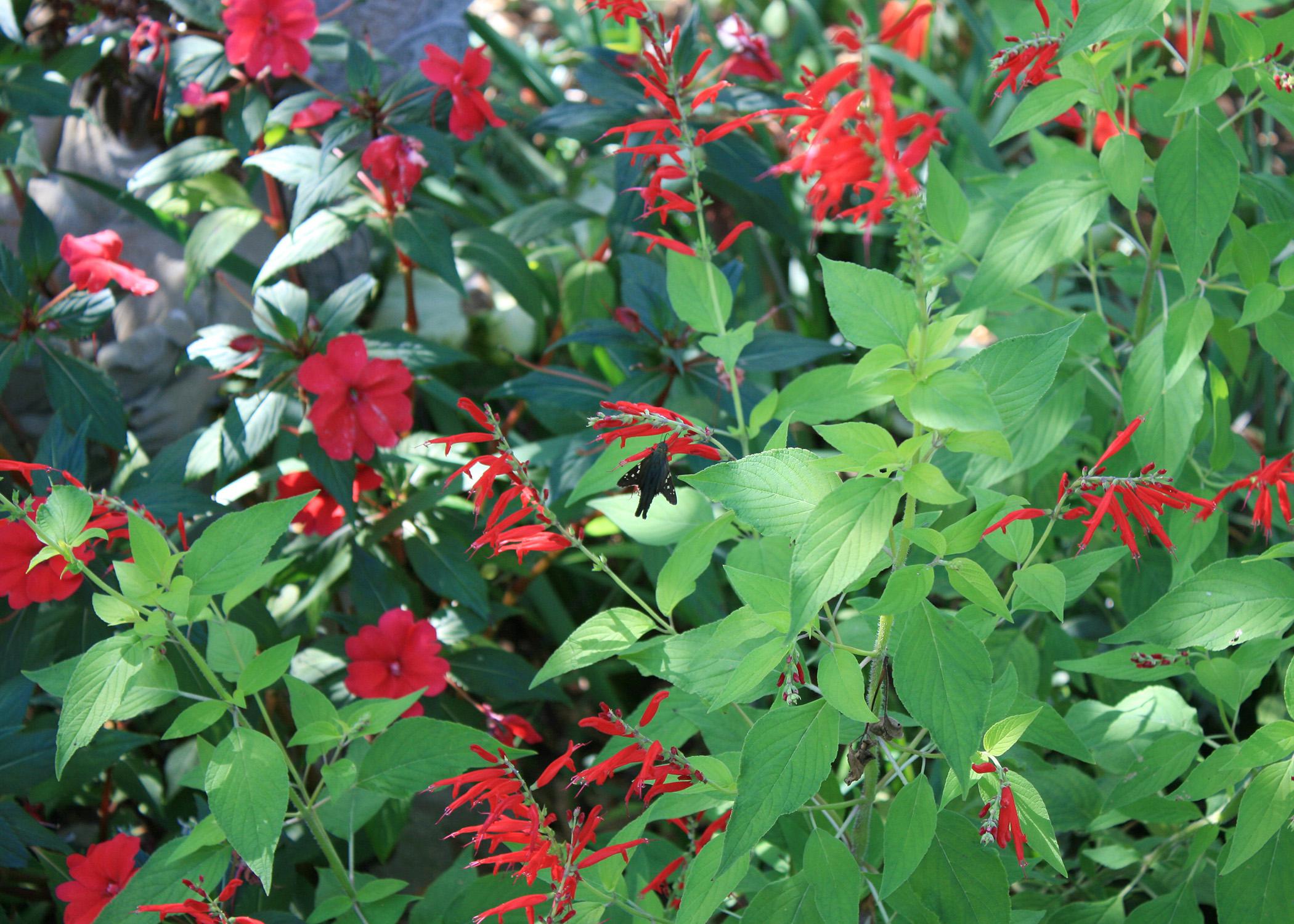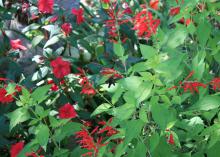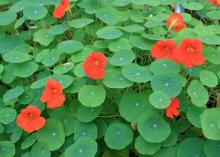Information Possibly Outdated
The information presented on this page was originally released on November 5, 2012. It may not be outdated, but please search our site for more current information. If you plan to quote or reference this information in a publication, please check with the Extension specialist or author before proceeding.
Certain fall blooms welcome butterflies
It requires planning ahead in the spring, but one way to add color and life to fall gardens is to welcome butterflies.
Butterflies are among the most entertaining creatures. If you plant the right flowers, you leave an open invitation for them to visit your garden. Butterflies are still around as we move into the late fall, and they are hurriedly investigating the flowers blooming in gardens.
Butterflies that most commonly visit late-fall gardens are orange fritillary and yellow sulphurs. Even day-flying moths such as the sphinx moth and hummingbird moth flit from flower to flower in the fall.
Nearly everyone enjoys watching butterflies, and gardeners can include plants in their landscapes that will attract them. The majority of plants that attract butterflies share two characteristics: tubular flowers and shades of red.
Tubular flowers are capable of holding quite a bit of nectar. This is part of Mother Nature’s grand plan. Nectar is simply sugar water produced by the plant; think of it as an energy drink for butterflies. As a butterfly uses its proboscis -- which is like one of those curly straws kids use -- to probe for nectar, it picks up pollen and transfers it to the next flower visited.
The pineapple sage is one of the best flowering plants to attract butterflies in the fall. Although flowering starts in the summer months, it intensifies in autumn and continues until the first hard frost.
I think one of best varieties of pineapple sage to plant in your garden is Golden Delicious. The chartreuse yellow foliage really shines in the garden. Because of its foliage color, it is best to plant Golden Delicious in at least partial shade. Butterflies can’t resist its fire-engine-red flowers that contrast with the bright foliage. Pineapple sage begins flowering in late summer and continues until the first hard frost.
Another great fall-flowering plant for butterflies is nasturtium, which shouts out for attention with its flowers colors of yellow, red and orange. Since butterflies have the ability to fly in multiple directions and sometimes hover a bit, having plants such as nasturtium whose flowers cascade is ideal.
Climbing nasturtium varieties can reach more than 6 feet tall. Keep the plant dense by pruning the vining stem tips. Pinch the faded flowers to promote more flowers. But the flowers are edible, so there shouldn’t be any faded blooms to pinch off.
Consider planting low to high, like in a stadium. This will allow butterflies to access all of the flowers and let you sit in the front row to watch the action.
I’ve named just two of the fall butterfly-attracting plants for your garden and landscape, but there are literally hundreds of blooming plants that attract butterflies. Creating a nectar-filled garden during the spring and summer will certainly put the welcome mat out for these acrobatic garden clowns and give us autumn entertainment.










